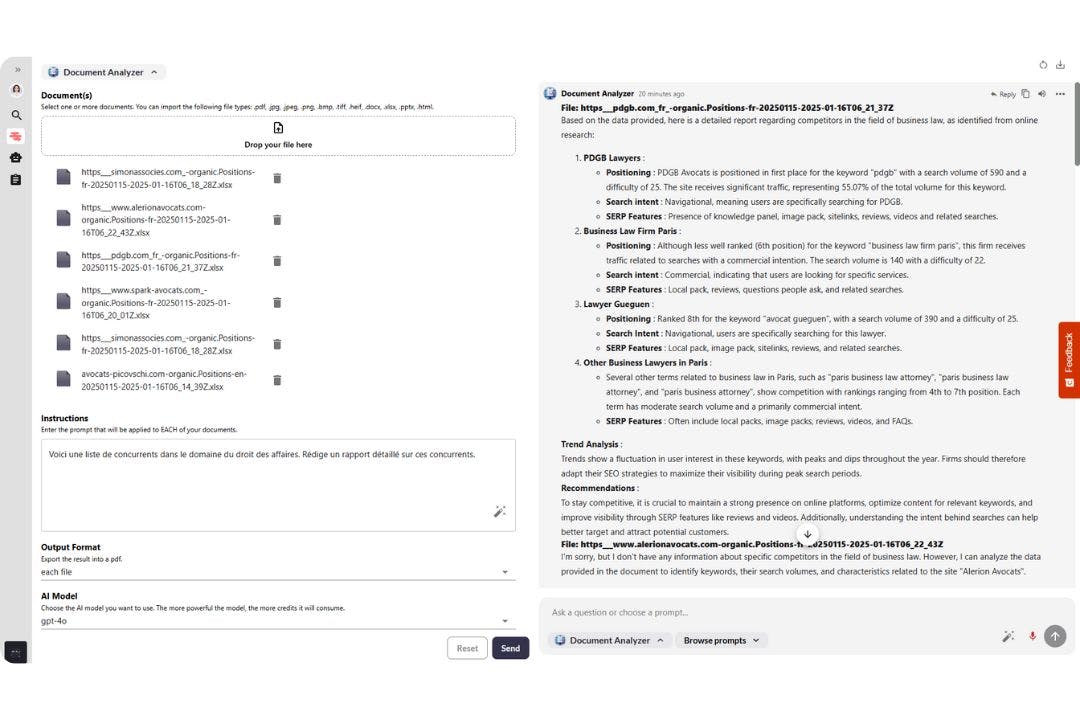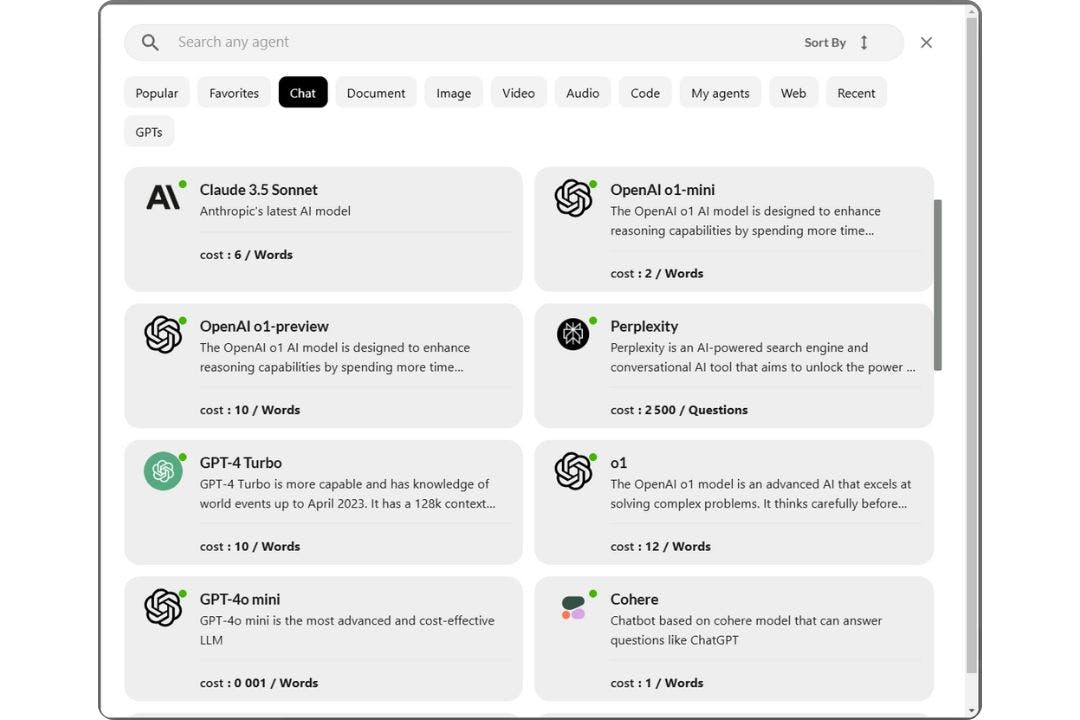Table of contents :
10 practical use cases of generative AI in document processing
Generative artificial intelligence is transforming the landscape of document processing, offering innovative solutions for the analysis and management of digital content. In this article, we will explore ten practical cases that illustrate how this technology can be applied to optimize the processing of PDF and DOCX files. From information extraction to summary generation, the possibilities are vast and promise to significantly improve the efficiency and accuracy of document-related tasks. Let’s embark on this exploration of generative AI applications.
Key use cases of generative AI in document analysis
Generative AI is revolutionizing the way we interact with documents, offering innovative solutions for analyzing and processing PDF and DOCX files. This technology leverages advanced algorithms to transform how businesses and individuals handle data. Below, we explore ten practical use cases of generative AI in document analysis.
1. Automated data extraction
Generative AI excels at extracting data from unstructured documents like PDFs and DOCX files. This capability is invaluable in industries such as finance, legal, and healthcare, where vast amounts of data need to be processed into structured, actionable information. By automating data extraction, organizations can enhance efficiency and accuracy.
2. Document summarization
AI-powered tools can swiftly scan lengthy documents to generate concise summaries or answer specific queries. This functionality is particularly useful in managing large volumes of information quickly and efficiently. For instance, Adobe's Acrobat Reader uses generative AI to summarize content across various document types, including PDFs and DOCX files.
3. Report generation
Generative AI can analyze extensive datasets to produce comprehensive reports at an unprecedented speed. This is especially beneficial for creating financial overviews, market analyses, and other detailed reports that require synthesizing multiple data points.

4. Dynamic templating and proposal generation
AI-driven automation in generating reports and templates based on specific criteria ensures accuracy and relevance. By tailoring content to audience needs and document formats, businesses can enhance their communication strategies.
5. Content generation and writing assistance
Generative AI offers writing suggestions, refines content for clarity, and proposes improvements in document structure. This ensures that the document's intent is clear and compelling, making it an excellent tool for content creation and editing.
6. PDF analysis and querying
Generative AI can create a custom knowledge base from PDFs, enabling users to query content efficiently. This involves using natural language processing and machine learning to automate the understanding of text within documents.
7. Data entry and extraction
By minimizing human errors and standardizing data preparation, generative AI enhances data accuracy in document-oriented processes. It ensures consistency and reliability, which is crucial for maintaining data integrity.
8. Document classification
Generative AI can classify documents based on their content, helping organizations organize and retrieve information efficiently. This is particularly useful in large document management systems where manual classification would be time-consuming.
9. Optical Character Recognition (OCR)
AI technologies can convert different types of documents, such as scanned paper documents, PDFs, or images captured by a digital camera, into editable and searchable data. This is particularly beneficial for digitizing old paper records.
10. Sentiment analysis in text
Generative AI can analyze the sentiment of the text within documents, providing insights into the emotional tone conveyed. This is useful for understanding customer feedback or analyzing communications.

Utilizing generative AI with Swiftask
For those looking to leverage generative AI in document analysis, Swiftask offers a practical solution. By visiting Swiftask AI Invoice Analyzer, users can get started with generative AI tools designed for efficient document processing. This platform provides an intuitive interface for extracting and analyzing data, making it accessible for businesses of all sizes.
Generative AI presents a transformative approach to document processing, offering tools that enhance efficiency, accuracy, and insight. As this technology continues to evolve, its applications in document analysis promise to expand, providing even more opportunities for innovation.
author
OSNI

Published
January 14, 2025